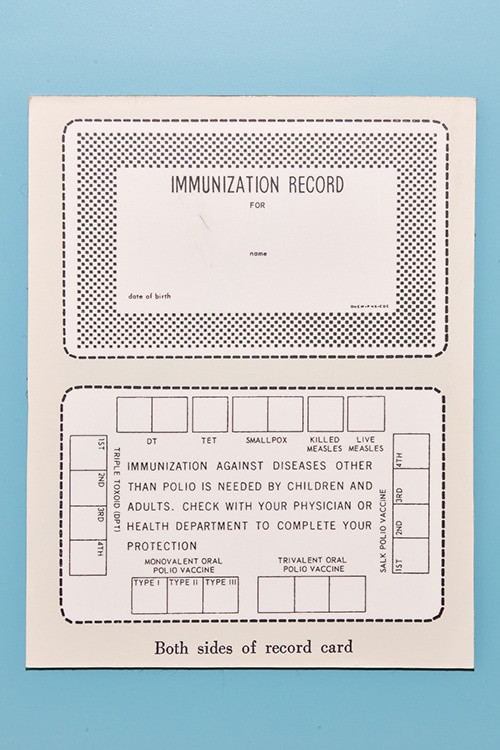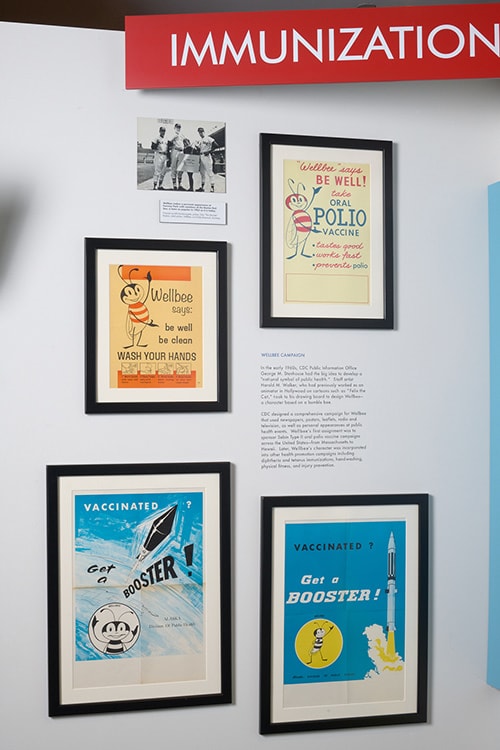Immunization and Vaccination Campaigns
Immunization Campaigns

In the 1960s, CDC and its partners began to fight other vaccine-preventable diseases in addition to polio, such as rubella (German measles), diphtheria, pertussis (whooping cough), and tetanus. The goal was to ensure that people who are medically able to receive vaccines do so. The Vaccination Assistance Act, signed in 1962 by President John F. Kennedy, made available funds to ensure all children under the age of five could receive vaccines, regardless of family economic status. Objects like a wallet card shown here were provided by doctors’ offices to help keep track of which vaccinations a patient still needed. Today, an electronic system is used by doctors to keep track of vaccines.

CDC also sought to make vaccines mainstream through the introduction of Wellbee, a bee mascot who attended community events to promote wellbeing and disease prevention through immunizations, hand washing, physical fitness, oral health, and injury prevention. According to a March 9, 1962 press release, Wellbee is “a pleasant-faced, bright–eyed, happy cartoon character, who is the personification of good health.” Shown here are posters of Wellbee and a picture of a person dressed in a Wellbee costume with Boston Red Sox baseball players. For decades, immunization programs worked diligently with good results. In 2000, routine immunization of year-old infants and children entering school resulted in the successfully elimination of measles in the United States. Unfortunately, misinformation about vaccine safety has led to some parents choosing not to vaccinate their children and measles has been reintroduced, causing outbreaks in the U.S.